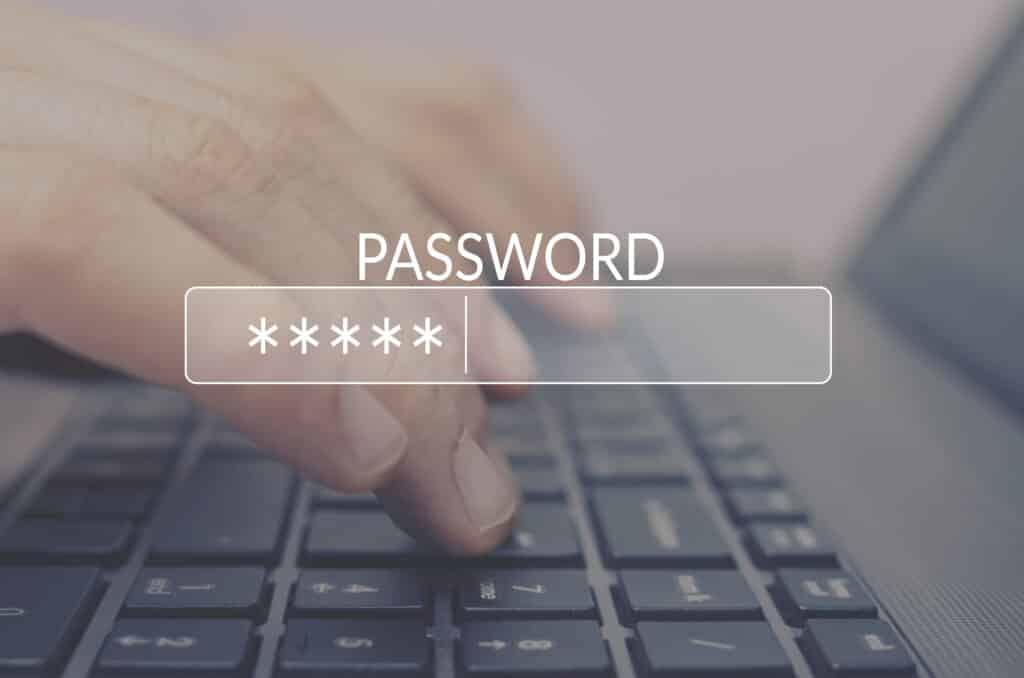What is the number one, most commonly used password? If you guessed “123456”, you guessed correctly. It just so happens to top the list of 10 most commonly used passwords. Although this simple password may be quick and easy to remember, it won’t protect you from getting hacked. Creating a strong password or passphrase is the first step to guarding every single one of your online accounts. Here are six valuable tips to make sure you’re set up for success and maximum security.
Password Security Tips
Complexity and Length
It’s important to create a password that is both complex and lengthy. Incorporating a random combination of lower case and upper case letters, numbers and special characters throughout your password adds to its intricacy. Password length is key here. While it’s commonplace to create a password containing at least eight characters, a password with 15 to 20 characters or more is much harder to crack. For added security, avoid predictable password sequences that start with a capital letter and end with a number or punctuation mark, use dictionary words or repetitive characters.
Passphrases
Using a passphrase that incorporates special characters is a great option for password managers and online accounts. It’s easier to remember a favorite phrase over a series of scrambled symbols and a longer length makes it more challenging for cybercriminals to hack. Steer clear of predictable phrases related to hobbies, birthdays, family names or pets.
Updating Passwords
Taking time to change your passwords is a common practice. Updating passwords every two to three months is a healthy password protocol for individuals and businesses alike. When making changes, create a unique password rather than tacking on a few extra numbers or symbols at the end of your current one. Making minor, predictable changes won’t protect your accounts. Generating new log in credentials from your password manager helps simplify this important task.
Unique Passwords for Every Account
Never use the same password across multiple accounts—this makes it all too easy for hackers to infiltrate and take down every account that uses the same password. Turning to a trusty password manager system will make this process a breeze with its ability to generate distinct passwords for you.
Password Policies at Work
Making a company password policy will help ward off intruders by outlining security best practices and expectations for all team members. A thorough password policy outlines computer security expectations such as how often users should reset passwords, minimum length, complexity, recycled passwords usage and notifies employees when passwords are about to expire.
Multi-factor Authentication
Always, always use multi-factor authentication (MFA) or two-factor authentication (2FA) to protect your online accounts. With cyberattacks on the rise, MFA adds an extra layer of security to your accounts by requiring users to provide two or more methods of verification when logging in. Answering a security question, security tokens, login PIN numbers and codes sent via text message or phone call are all part of the multistep verification process. In today’s day and age, you can’t live without it. Thanks to MFA, you can reduce the risk of a password related breach by 99%.
Online security begins with creating a robust password for every account you log in to. Applying the latest cybersecurity tools and password best practices will help keep you and your team’s online resources secure. Best of all, you can breathe a sigh of relief knowing you’re forcing lurking cybercriminals to walk away empty-handed.
With headlines full of cyberattacks and security breaches, every individual must take online risks seriously. Our IT specialists are here to answer your questions and ensure your company remains protected. Learn more below!
Contact an IT Specialist View Top Password Managers
IronEdge Group Recognized on CRN’s 2024 MSP 500 List

Houston, Texas, February 12, 2024 — IronEdge Group is honored…

